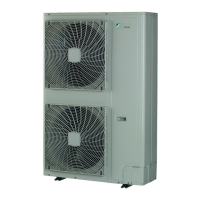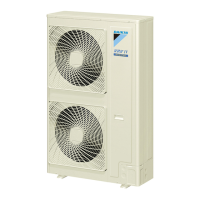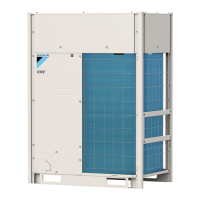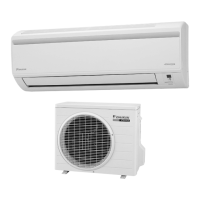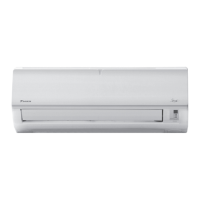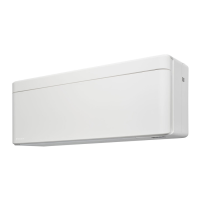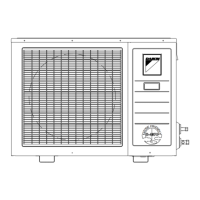15 | Piping installation
Installer and user reference guide
86
SV1A25AJV1B+SV4~8A14AJV1B
VRV 5 safety valve unit
4P749917-1 – 2023.09
▪ Do NOT use flux when brazing copper-to-copper refrigerant piping. Use phosphor
copper brazing filler alloy (BCuP), which does NOT require flux.
Flux has an extremely harmful influence on refrigerant piping systems. For
instance, if chlorine based flux is used, it will cause pipe corrosion or, in
particular, if the flux contains fluorine, it will deteriorate the refrigerant oil.
▪ ALWAYS protect the surrounding surfaces (e.g. insulation foam) from heat when
brazing.
15.3.3 Joining branch pipe ports
To make a connection with e.g. FXMA200A and FXMA250A, join branches with
joint kit EKBSJK. Only the following combinations are possible. E.g.: it is not possible
to join ports B and C.
Note: When using the joint kit, change the DIP switch settings. See "16.4To set the
DIP switches"[496].
Model Possible port combinations
SV4A A+B C+D
SV6A E+F
SV8A G+H
15.4 To insulate the refrigerant piping
After finishing the leak test and vacuum drying, the piping must be insulated. Take
into account the following points:
To insulate stopper pipes
In case of stopper pipes: install stopper pipe insulation tubes (accessory). Adding
additional insulation might be required depending on the ambient conditions.
Follow the rules for the total minimum insulation thickness.
1 Attach an insulation tube against the tube on the SV unit.
2 Apply a tape to close the seam so that air does not enter.
a Insulation tube (accessory)
b Cut surface (branch pipes only)
c Tape (field supply)
d Insulation tube (attached to the SV unit)
e SV unit
f Adherence surface
To insulate the header and branch pipes (standard insulation)
The header pipes and branch pipes MUST be insulated (field supply). Make sure
that the insulation is properly mounted over the header and branch pipes of the
unit as shown in the image below. Always use tape (field supply) to prevent air
gaps in the seam between the insulation tubes.
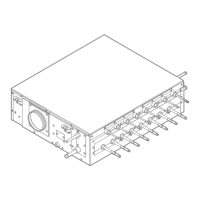
